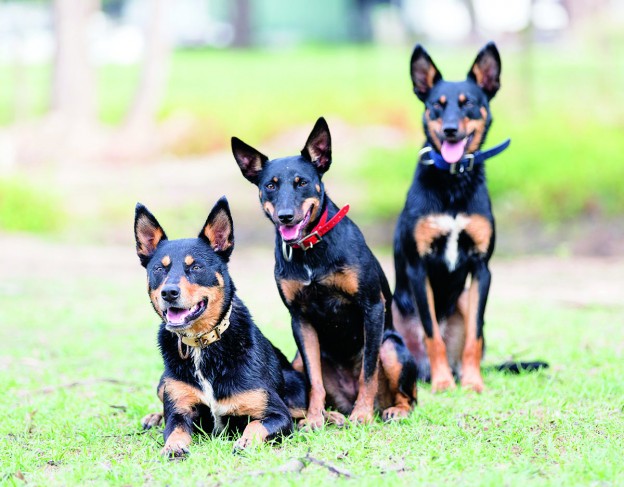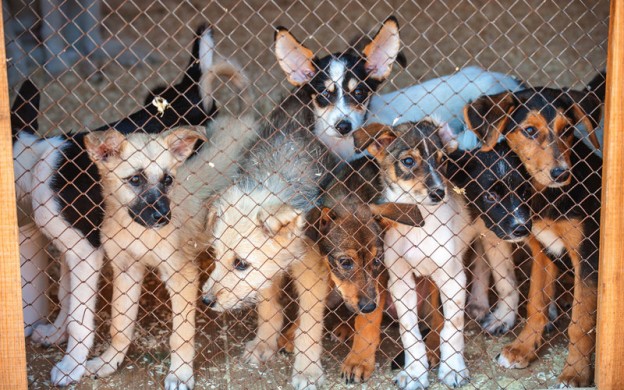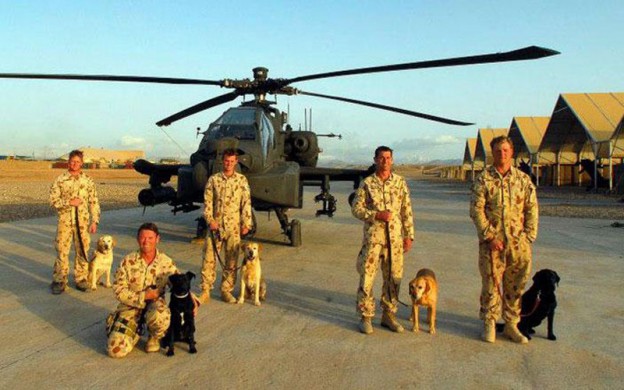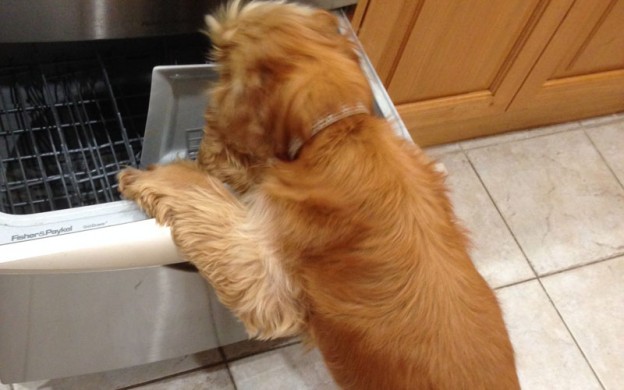The Wild Painted Dogs of Africa are in danger of extinction after 12 million years of existence. Dogs Life speaks to conservationists who are fighting to save this predator, which is adored by animal lovers and hated by hunters. By Lorraine Chittock.
Painted? You paint a house or the town red, not a wonderful creature like this, says Tony Fitzjohn OBE [Order of the British Empire], field director of The George Adamson Wildlife Preservation Trust based in Tanzania, eastern Africa.
Let’s please call them Wild Dogs in a day and age when we’ve tamed everything to our own satisfaction, he tells Dogs Life.
John Lemon of Painted Dog Conservation disagrees. The term Wild Dog suggests they’re a strain of domestic dog that has run feral and established themselves in the wild.
Based in Australia, Lemon and others provide support for the Painted Dog Research Project in the African country of Zimbabwe, as well as projects in Namibia and Zambia.
Adored by animal lovers, feared by the misinformed, hated by hunters, its fans and foes persist in injecting dog into a plethora of local and English names, even though this creature is not of the Canis family. More closely related to the civet, this communally oriented animal has successfully hunted all over Africa for the past three to 12 million years, and endearingly, often looks after its sick or injured members.
The name Painted Dog vies repeatedly with Wild Dog, and advocates point to the Latin name for support, claiming Lycaon Pictus translates as painted wolf-like animal. Pictus is derived from the word pingo, to paint, and alludes to the visual similarity with the Canis line, while the lycaea in mythology was a sacrificial ceremony whoever ate the entrails of a victim was transformed into wolves. Well call these stunning creatures Wild Painted Dogs or Dog with a capital D.
Wild Painted Dogs in danger
Conservationists are passionate people, and both Fitzjohn and Lemon, while working on opposite sides of Africas huge continent, agree these unique animals are in danger.
At the turn of last century, Lemon says, estimates on their population were in the vicinity of 300,000. Today, the Dogs are extinct in 25 of the 39 countries they once occurred. As long as our teams and I are alive, we will fight to the end to stop the unthinkable.
Africa is thought of as the continent whose savannas and skies are endless. But as is common all over the world, human overpopulation has resulted in less wild habitat. The Wild Painted Dog has been forced into contact with people and as such, commonly succumbs to human-related deaths, such as road accidents. Ironically, the domestic dog, with which they’re erroneously associated, has become one of its unwitting worst enemies by transmitting diseases, such as rabies, parvo virus and distemper.
When I was down in the Masai Reserve, I one day saw a strange thing, such as no one I know has ever seen, writes Isak Dinesen in Out of Africa. All at once, the plain at the horizon began to move and gallop with more than the atmosphere. A minute later Farah said: Memsahib, these are wild dogs. The Natives are afraid of them and will tell you that they are very murderous.
Responding to this observation made almost 100 years ago, Lemon says, Generally, people do not fear the Dogs, as there has never been an attack ever recorded in the wild. The way in which they kill is what upsets the uninformed. Usually, a pack member grabs the muzzle of the prey and another the rump, and the rest swiftly disembowel the animal. Though some see this as cruel, Dogs can kill their prey in less time than it takes a lion to suffocate theirs. They’re the most successful land predator in the world. Due to this, farmers, and even national parks in some countries, once tried to eradicate the Dogs.
Changing the views
Kids views are changing here in Tanzania, Fitzjohn says, through education, contact and talks here in camp. We just built an Environmental Education Centre inside our 44 square kilometre Rhino Sanctuary and have a 30-seater bus to bring select kids based on interest and aptitude. Eventually, the bus will be used as a mobile classroom.
Lemon has seen education work even with old-timers. There’s a farmer in Zimbabwe who originally tried to farm cattle, he tells Dogs Life. He is said to have shot 28 lions one evening. As cattle farming became more difficult, he turned his hand to farming game for commercial hunting. The lion continued to be an issue, as they’d bring down prize trophies, but they were also sought after by hunters and so spared. But Painted Dogs were not trophy animals and were extirpated. Through front-line conservation and education programs, the farmer still operates his hunting concession, but now allows the Dogs to breed and den on his land. Hes even provided meat and yards for us to rehabilitate injured Dogs at his house.
Bad has also been transformed to good in regards to poaching. Bush meat is the plague of Africa, Lemon says. The traps do not discriminate which animals are dispatched. Dogs, which people do not eat, are also caught. Many ex-poachers have been given the opportunity of employment with us and now use their bush skills to help protect the Dogs and their dens during breeding season.
And dens need protecting, despite the mother or other pack members providing around-the-clock care. The dominant female selects a site, which she either digs by herself or with the assistance of other pack members. Sometimes, they’ll use an abandoned hole made by aardvarks or other mammals. Ten or 11 pups are usually born to each litter and are nursed for the first 12 weeks before the entire pack begin feeding the pups regurgitated food. Despite the strong communal nature, the mortality rate is high.
Breeding Dogs a priority
The breeding and re-introduction of captive-bred Dogs has become a high priority, though it hasnt been without its difficulties. Dogs untrained by their own kind have poor hunting skills and are unaware of dangers in the wild. But this problem can be overcome by mixing captive-bred Dogs with wild-caught animals and when bonded, releasing them together.
Dinesen continues in her classic, …there must have been five hundred wild dogs … They were running in a long file, two or three or four side by side, it took time before the whole procession had passed us. In the middle of it, Farah said: These dogs are very tired, they have run a long way.
Dogs, like the elephant, have a natural inclination to roam great distances, but very few national parks are big enough. Selous Game Reserve in Tanzania, with an area about the size of Switzerland, is home for only about 800 Dogs. Though safe from human activities, they fall prey to lion and other predators, and compete for food with hyenas. Smaller parks might only contain 50 to 100, or none at all. Their strong communal nature turns against them if a disease breaks out, and can wipe out an entire population. The Maasai Mara, where Dinesen claims to have seen 500 Wild Painted Dogs, adjoins the Serengeti ecosystem on the Kenya-Tanzania border. It is thought their population has been completely wiped out by disease.
I thought Dinesen seeing 500 at one time was an exaggeration, Fitzjohn says. But it mightve been possible in those days when, as George Adamson once said, The Game was going to go on forever, there were no people… I would one day like them to be able to roam unimpeded without a massive domestic stock presence.
Is it possible anyone will ever observe again what Dinesen recorded in Out of Africa? My personal dream, Lemon reports, is to have a project set up in every range state the Dog resides and move onto re-establishing Dogs into areas they once did, but are no longer.
This is a dream the Wild Painted Dog no doubt shares.
Author Lorraine Chittock [www.OnaMissionFromDog.com], despite living on the edge of a game park for two of the five years she lived in Kenya, sadly regrets never seeing one Wild Painted Dog.
Painted Dog Conservation Inc Australia
Painted Dog Conservation Inc. Australia was established in October 2003 to provide support for the Painted Dog Research Project, which operates across Zimbabwe. From 2007, the organisation has increased its level of support to include projects in Zambia and Namibia.
If you wish to support the programs via membership or donations, please visit www.painteddogconservation.iinet.net.au
For more about the Painted Dog project, please visit www.painteddog.org







